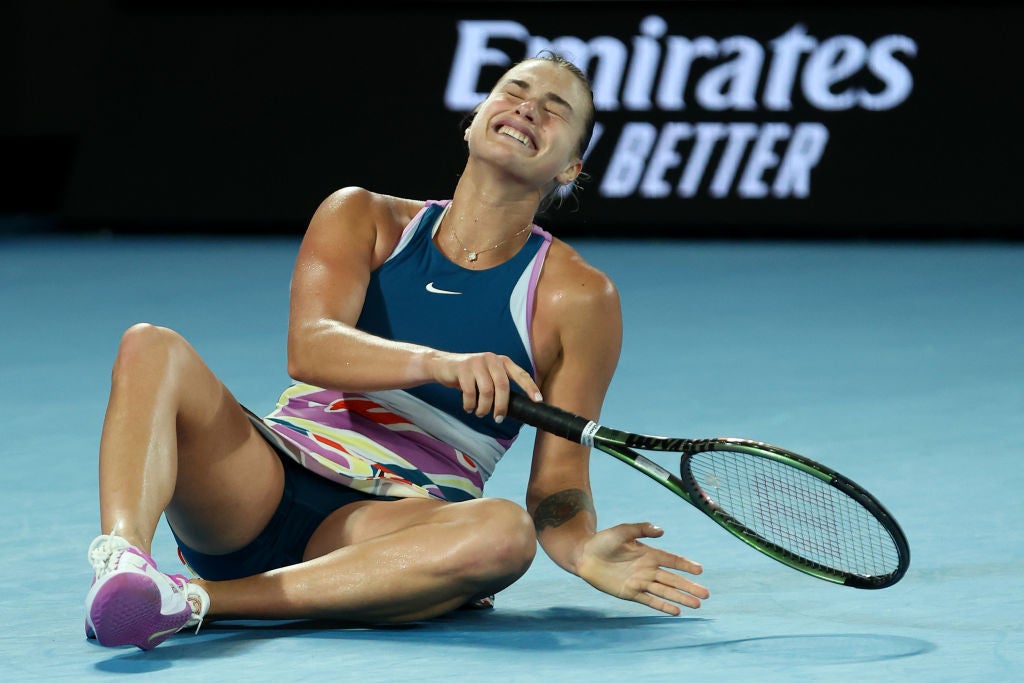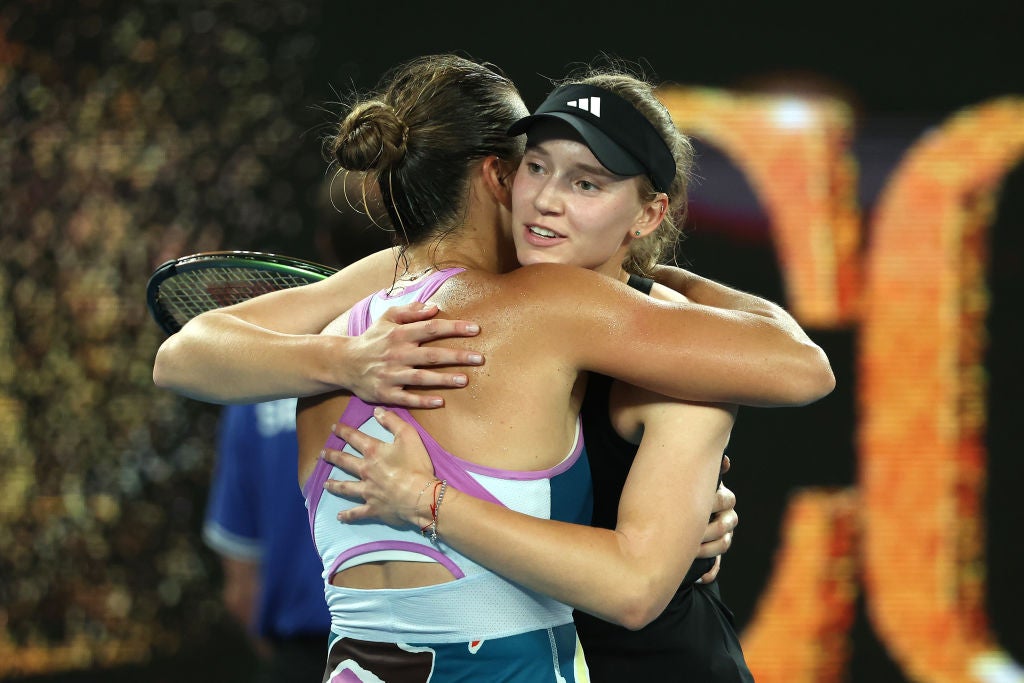
Aryna Sabalenka’s first grand slam final began with a double fault. Her first Championship point, too, was a double fault. But in between, Sabalenka produced a near faultless display of the improvements she has made to her game, as the 24-year-old battled from a set down to defeat Elena Rybakina in a thrilling Australian Open final. Sabalenka’s first grand slam title required three more Championship points to close it out. There, as she had done so impressively since falling behind, Sabalenka kept her cool to prevail in what was an absorbing contest.
In almost two and a half hours on Rod Laver Arena, Sabalenka’s newly-found mental toughness was put under the fiercest of examinations by the Wimbledon champion. As Rybakina ramped up the pressure on the returns, Sabalenka went through the full array of emotions, as double faults were followed by aces, winners by unforced errors. She was up, down, on her haunches, pumping her fist, gesticulating to her box, roaring on forehands. It made for a compelling sight as the momentum of the final shifted and turned.
On the other side of the net Rybakina maintained a steady course as she played an nerveless opening set, disrupting Sabalenka’s serve and forcing errors with the depth of her forehand. There were five double faults from Sabalenka, as she slipped into the habits of last season, and they often came at crucial junctures in the match. Rybakina played a smooth, relaxed game and took her chances, settling into the final with the experience of a grand slam champion.
In another time, Sabalenka may well have crumbled, but her response was controlled and measured as she prevailed in a tense 57-minute second set to level the match. As her backhand pounded the lines and the winners flowed, Sabalenka had gone from a sailor caught in a storm, sheets flapping and ropes flailing in the wind, to a player whose power was being harnessed in impressive style. Rybakina, who is so rarely flustered, saw her first-serve percentage plummet to 50 per cent and the turnaround in Sabalenka’s game was displayed by a stat-line of 22 winners to 11 unforced errors.

As Sabalenka closed out the second set it was the Belarusian who was asking the testing questions. It continued into the decider, with Rybakina having to grind for every hold and saving several break points in the early exchanges of the third. By the seventh game, Sabalenka had already missed eight break point chances to move ahead and there were signs of frustration growing. Instead, on the ninth break point opportunity, Sabalenka almost knocked Rybakina off her feet with a bullet backhand return.
Sabalenka’s response to throwing in a double fault on her first Championship point was a sign of how far she has come in the past 12 months. This was a player who accepted her serve was a “disaster” last year and it wasn’t until the end of the season where she had the chance to finally tear it down and start again. To help, she turned to a biomechanic, who deconstructed Sabalenka’s serve before helping her to build it up piece by piece. “I was just like, ‘Please, someone help me to fix this f***ing serve,’” Sabalenka had said.
Eventually, Sabalenka’s serve became smoother, with less focus on outright power and slamming aces. Having more belief in her game helped her to relax mentally - Sabalenka stopped working with her psychologist in pre-season and said she was instead taking responsibility for her own mindset. She felt like a more confident, more resilient player, and unburdened by the past, Sabalenka has now completed a remarkable journey.

The act of serving for her first grand slam final, though, was one fraught with tension. It started with a double fault, but ended with her biggest serves of the match. Sabalenka had already won the battle of what was billed as an Australian Open final between two big-hitters, as she changed her gameplan to move Rybakina away from her spots and open up the court. The final step, though, required calm. Sabalenka can say she has that now, as well as a first grand slam title.







